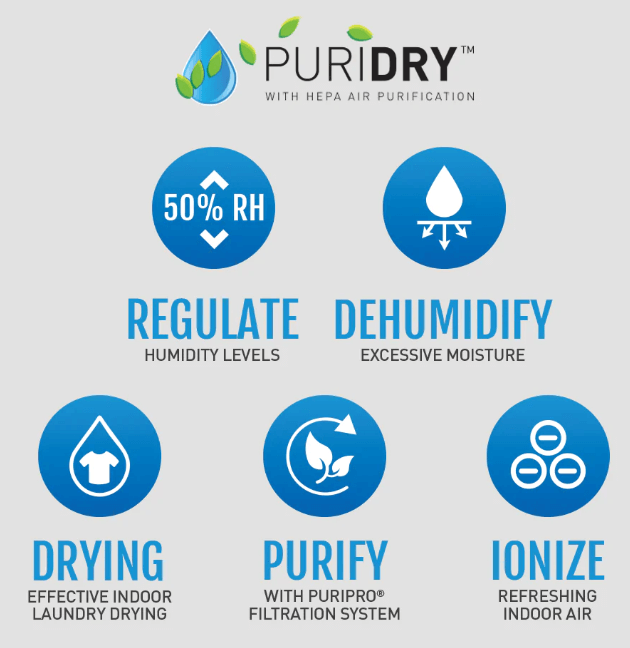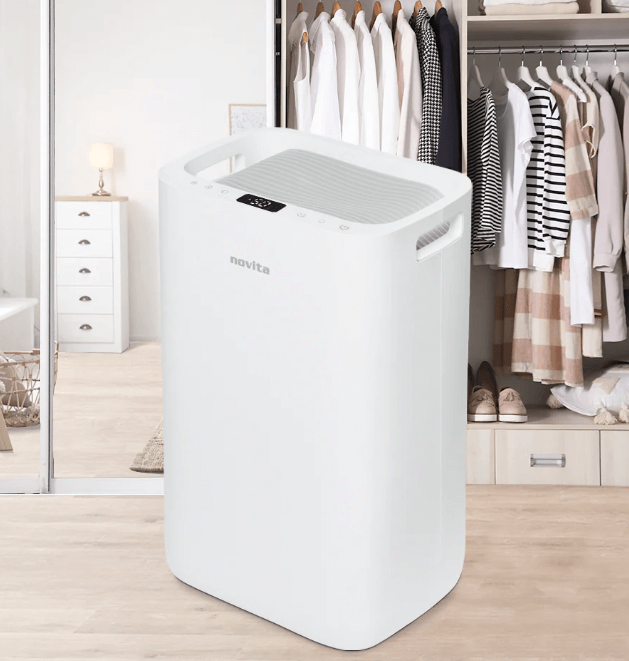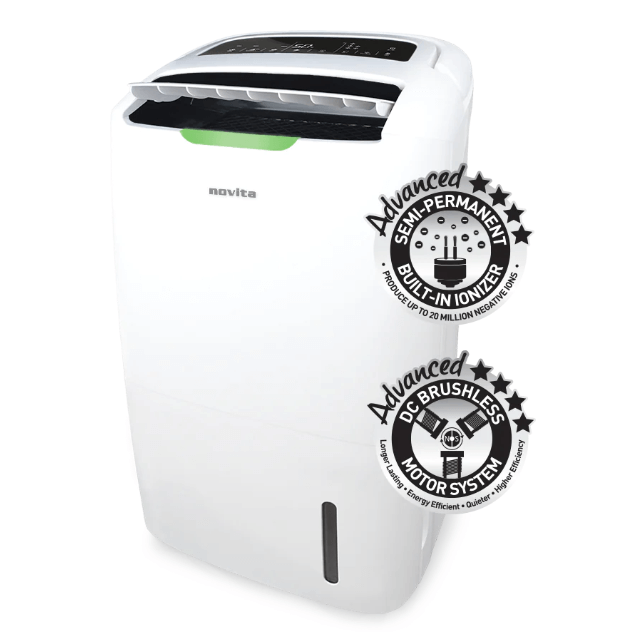Use a Dehumidifier to Dry Clothes
December 25, 2024Drying clothes indoors can be a challenge, especially during wet or humid weather. When traditional tumble dryers are not available or practical, using a dehumidifier to dry your laundry can be a convenient and efficient alternative. In this article, we explore the various aspects of using a dehumidifier for drying clothes, including its benefits, setup, optimization, and comparisons with traditional dryers like Novita ND25.5 and ND2000.

How to Use a Dehumidifier to Dry Clothes
Setting up the Dehumidifier for Drying Clothes
Setting up a dehumidifier to dry your clothes indoors requires placing the appliance in a well-ventilated area where you intend to dry the laundry. The dehumidifier should be positioned away from walls and furniture to ensure optimal air circulation around the unit.
Optimizing Dehumidifier Settings for Drying
When using a dehumidifier for drying clothes, it’s essential to adjust the settings for optimal performance. Setting the dehumidifier to a lower humidity level can expedite the drying process and reduce the time it takes for the clothes to dry indoors.
Maximizing Drying Efficiency with a Dehumidifier
To maximize the efficiency of using a dehumidifier for drying clothes, it’s advisable to use a drying rack or airer to hang the wet laundry. This allows the dehumidifier to effectively extract excess moisture from the air, facilitating a faster drying process.
Benefits of Using a Dehumidifier to Dry Clothes

Reducing Drying Time with a Dehumidifier
One of the significant advantages of using a dehumidifier to dry clothes is the reduction in drying time. By removing moisture from the air, the dehumidifier can significantly expedite the drying process, allowing for a quicker turnaround of laundry compared to traditional air-drying methods.
Preventing Condensation and Mould Issues
Using a dehumidifier for drying clothes indoors also helps prevent condensation and mould issues that can arise in humid environments. By maintaining the optimal humidity level, the risk of dampness and mould growth in the laundry and surrounding areas is significantly minimized.
Cost-Efficiency and Convenience of Using a Dehumidifier
Aside from its effectiveness in drying clothes, using a dehumidifier is a cost-efficient and convenient way to dry laundry indoors. Compared to traditional tumble dryers, dehumidifiers consume less energy and are generally more economical to operate, offering a practical and sustainable approach to indoor clothes drying.
Factors to Consider When Using a Dehumidifier to Dry Clothes

Choosing the Right Type of Dehumidifier for Drying Clothes
When selecting a dehumidifier for drying clothes, it’s crucial to choose a model with laundry-specific features, such as a laundry mode or targeted settings for moisture extraction during the drying process. Models like Novita ND25.5 and ND2000 are designed to efficiently dry clothes indoors with specialized functions.
Monitoring Humidity Levels for Effective Drying
Effective use of a dehumidifier for clothes drying involves monitoring the humidity levels in the drying area. By ensuring the humidity is maintained at an optimal level, the dehumidifier can work efficiently to remove excess moisture from the air, facilitating faster and more effective drying of the laundry.
Preventing over-drying and Air Quality Concerns
While using a dehumidifier for clothes drying, it’s important to prevent over-drying of the laundry, which can impact the fabric quality. Additionally, maintaining proper ventilation in the drying area helps prevent musty odours and ensures the overall air quality remains fresh and conducive for indoor clothes drying.
Tips for Maximizing the Use of a Dehumidifier for Drying Clothes
Utilizing Laundry Mode on Dehumidifiers for Clothes Drying
Many modern dehumidifiers are equipped with a specific laundry mode designed to optimize the drying process. Utilizing this feature ensures that the dehumidifier operates at the most suitable settings for effective and energy-efficient drying of clothes indoors.
Understanding the Role of Airers and Other Drying Aids

When using a dehumidifier for clothes drying, employing airers, drying racks, or other drying aids can further enhance the efficiency of the drying process. These aids provide adequate space for hanging wet laundry, allowing the dehumidifier to extract moisture effectively and speed up the drying of clothes indoors.
Recommendations for Specific Dehumidifier Models like novita ND25.5 and ND2000
For users seeking dedicated dehumidifiers for clothes drying, models such as Novita ND25.5 and ND2000 offer specialized features tailored for effective indoor clothes drying. These models are designed to expedite the drying process and maintain optimal humidity levels, making them ideal choices for efficient clothes drying with a dehumidifier.
Comparing Dehumidifier Drying vs. Traditional Dryers

Pros and Cons of Dehumidifier Drying Compared to Tumble Dryers
When comparing dehumidifier drying with traditional tumble dryers, it’s essential to consider the advantages and limitations of each method. While dehumidifier drying offers energy efficiency and reduced environmental impact, traditional dryers may provide faster drying times and greater convenience for some users.
Effectiveness and Efficiency of Dehumidifier vs. Traditional Dryer
In terms of effectiveness and efficiency, using a dehumidifier for clothes drying excels in moisture extraction and energy conservation, making it a sustainable choice for indoor drying. Traditional dryers, on the other hand, offer rapid drying but consume higher energy levels, posing environmental and economic considerations for users.
Environmental and Economic Benefits of Using a Dehumidifier for Drying Clothes
By using a dehumidifier to dry clothes, individuals contribute to environmental conservation by consuming less energy and reducing their carbon footprint. Additionally, the cost-efficiency of dehumidifier drying makes it an attractive and sustainable option for indoor clothes drying, offering long-term economic and environmental benefits.
